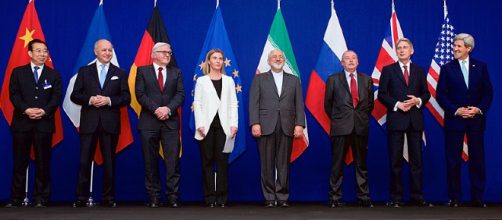The 2015 nuclear deal involved Iran and six other countries- the US, France, Germany, Russia, China, and the UK- that lifted international sanctions on Iran's economy including those on oil and trade. In return, Iran agreed to add restrictions to its nuclear activity.
Although the US played a part in the nuclear deal, President Donald Trump has stated that he will leave the agreement and will decide on May 12 if he will reintroduce new sanctions from his country. So, as a look back to what the nuclear deal has done in terms of Iran's economy, it seems to have substantially helped Iran with bettering its economy.
Has oil export increased in Iran?
Before 2015, the country's economy was in a deep recession because their exports were constrained by Western sanctions. In 2013 Iran was exporting just about 1.1 million barrels of oil per day, giving the country a GDP growth of –0.3 percent for that year, according to the International Monetary Fund. However, since the agreement, Iran's oil exports boomed.
In 2016 Iran's crude oil exports increased 77.7 percent, exporting about 1.921 million barrels a day with a GDP growth of 12.5 percent. According to Amir Paivar, Iran now exports almost 2.5 million barrels a day with a GDP growth rate of 4 percent.
Does Iran have any other exports other than oil?
Iran is a famous exporter of nuts and pistachios reaching a total of 47 billion dollars in non-oil exports.
However, the country's struggle with these types of exports (pistachios, nuts, saffron) is drought, not the trade sanctions. Drought in Iran is considered a national security issue, because of the lack of rainfall and dryness the country dwells on.
Since the trade sanctions were lifted off Iran, trade, other than oil exports, have made their way through the European Union. However, South Korea and Turkey remain their largest exports even when sanctions remain on Iran.
Has Iran's economy stabilized?
The country's economy is now the second largest in the Middle East and North Africa (MENA), right next to Saudi Arabia as the first. After the nuclear deal was contrived, Iran's economy is still recovering from its earlier years of harsh economic recession and still trying to bring up the value of the Rial (Iranian dollar).
However, Iran currently has a GDP growth of four percent and is encompassing market-based reforms which consist of three main pillars; the development of a resilient economy, progress in science and technology, and the promotion of cultural excellence.


